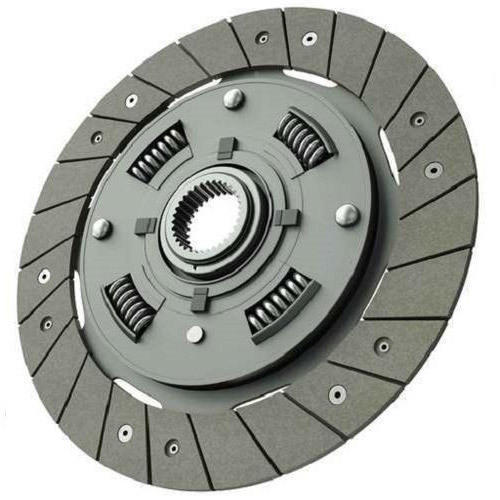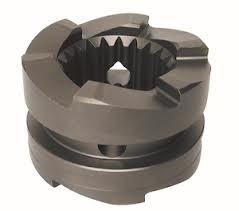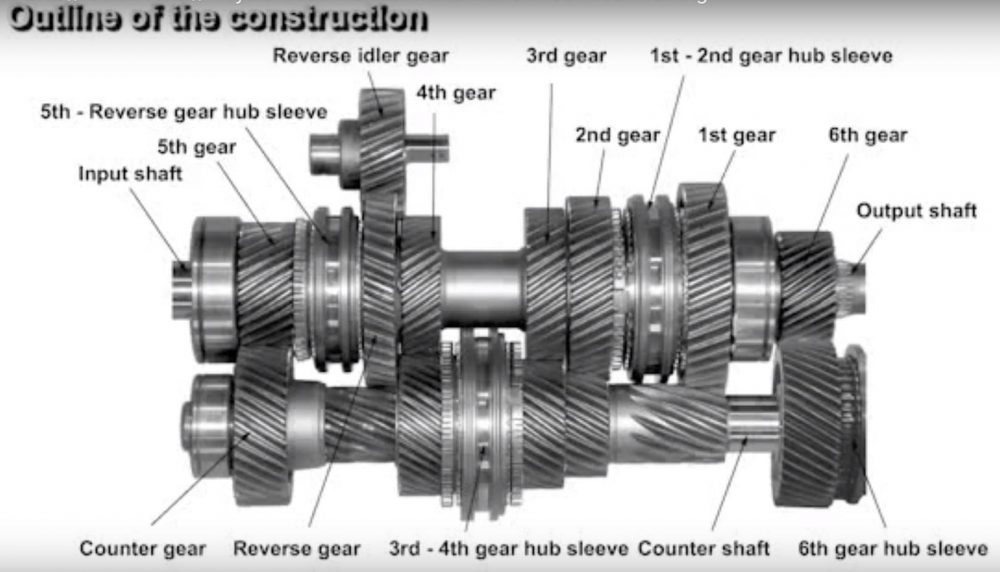After covering all sorts of automatic transmission its time we take up the manual transmission. This transmission is quite complicated to understand when compared to automatic transmission so things will get a little hairy. Worry not as we will try our best to keep it as simple to understand as possible.
Before we get into the thick of it, we need to understand the parts involved and how they work individually. Let’s begin.
Popular Read: iMT vs AMT | Which is a better Transmission?
What Is A Transmission?
The connection from your engine to the wheels is known as transmission. ‘The transmission of power’ hence it gets the name. This power transfer involves multiple parts and requires utmost calculations to be made in order to prevent energy loss. A manual transmission is comparatively more complex to understand than automatic transmission. Now we move to parts involved and how said parts work.
Parts In A Manual Transmission
The major parts involved in a manual transmission are engine output shaft (also called the input shaft), countershaft, output shaft, synchronises, dog clutches and a clutch. Shafts have gears in them which determine what torque and speed are transferred to the wheels.
Clutch

The connection from the engine to the input shaft, the clutch’s job is either supply rotational force to the input shaft or cut it. It has multiple parts which work when the clutch pedal is pressed. Pressing the clutch pedal disengages the flywheel from the clutch assembly which cuts the engine supply to the transmission. This allows the transmission to rotate freely from the engine.
This disengage action is performed in the following way. After pressing the clutch pedal a part named clutch fork depresses the clutch pressure plate which is directly connected to the clutch and the clutch is connected to the flywheel. This depression removes the connection between clutch and flywheel thus cutting the chain.
Input Shaft
This shaft is connected to the flywheel via a clutch. It drives the countershaft gears at the same speed as the engine.
Counter Shaft
The countershaft houses a bunch of varying gears that are driven by the engine through the input shaft. These gears also known as the countershaft gears are in constant mesh with the output shaft gears. Being in constant mesh means that these gears are always connected to each other and rotate all the time. The countershaft gears are directly connected with the shaft itself and thus always rotate at the speed of the shaft.
Output Shaft
The output shaft has gears of varying sizes. These gears are in constant mesh with the countershaft gears and rotate freely from the output shaft but when engaged they are in simpler words stuck with the output shaft. This means that the output shaft will rotate according to the power transferred by the gears. This will get easier when we explain the entire working later on.
Dog Clutches

Different from the normal clutches, the dog clutches are present on the output shaft. When a gear is engaged by the driver the job of the dog clutch is to make that gear ratio move the output shaft. Without a dog clutch engaged, all the gears rotate freely and the vehicle is in neutral. The dog clutches can move in and out to engage and disengage when necessary allowing the gears to only rotate and not move forwards and backwards. The dog clutches are permanently connected to the output shaft and serve as a connection between the shaft and the loose gear.
Synchronisers
The job of the synchroniser is to ensure that the speed of the output shaft and the gear that is about to be engaged is similar. They have frictional plates that slow down the gears at the same speed as the output shaft allowing easy connection by the dog clutch.
Download The GoMechanic App Now!

Gear Ratio And How They Change The Output
Before we explaining the working of a manual transmission we need to get into what are gear ratios and how they change the engine output.
Gear ratio can be explained as the ratio of teeth of the gears. In the case of transmission its the ratio of the driven gear by the driving gear. The gear ratio can help us explain how we get more torque on low gear and high speed at higher gears.
To explain why lower gear gets high torque we need to refer to the formula for torque. Torque equals force times the distance. Distance, in this case, is the radius of the driven gear. As we know the driven gear gets smaller as we go up the ratio thus we get more torque at lower gears.
As to why higher gear offers more speed, output RPM of a car is determined by the engine RPM divided by the gear ratio. Higher gears have a smaller gear ratio which allows us to get more RPM.
To explain this with an example. Imagine your RPM is constantly at 1000. Assume your first gear ratio is 3:1, this makes the output RPM as 333.3RPM. Now assume your top gear ratio is 0.5:1, this means your output RPM now will be 2000.
How It Works

The input shaft drives the gear on the countershaft which are in constant mesh with the output shaft gears. The input drives the countershaft gear with a gear of its own. The gears on a countershaft are connected permanently to the countershaft and thus the countershaft always rotates along with the gears. The gears on the output shaft are loosely connected to the output shaft thus rotating freely along with the countershaft gears and not moving the output shaft. When a gear has been engaged, the power from the input shaft first goes to the countershaft and then to the gears on the output shaft.
The difference here is that the engaged gear is now connected to the output shaft. As the gears cannot move forwards and backwards the connection to the shaft is done by the dog clutch ( shown as gear hub sleeve in the above diagram). The dog clutch of the engaged gear attaches itself to the gear and serves as a connection between the shaft and the gear. Note that the dog clutches are permanently connected to the shaft and are moved by a fork which is connected to the gearbox. This makes the shaft rotate at the same speed as the gears ratio.
Read More: How Torque Converter Automatic Transmission Works | Explained
When a different gear is engaged, the clutch disengages from the flywheel and no power is transferred to the shafts. The new gear is selected by the driver and now the synchroniser with their friction plate slow down the gear for the dog clutch to connect to it. The gear is slowed down till it reaches the same speed as the output shaft. This allows the dog clutch to engage the gears easily without clashing teeth. After the power flow starts again the new gear ratio is now driving the output shaft.
The Reverse Gear Working
The reverse gear working is done in the following way. As the engine cannot rotate in reverse the transmission has to rotate the shafts in such a way that the movement of the car is backwards. This is done by using a new gear called an idle gear. The idle gear comes in between the countershaft gear and the output shaft gear. The idle gear makes the output shaft gear rotate in the opposite direction thus making the car move backwards.
As the idle gear doesn’t have a dog clutch the car needs to be stopped completely before the reverse gear can be engaged. And if you are wondering similar to a lot of people as to what happens when a car is put in reverse if it’s already driving the answer is it will simply not go in reverse. It will however clash the teeth and harm the gears. Transmissions are made to ensure reverse gear cant be engaged while the car is moving forward. It is still really damaging to the gears so please don’t do it.
This covers how the manual transmission works and how gear ratios affect the output. The more gears in a car the higher the output can reach. This is one of the more complex topics covered and we hope that it clear enough to get an understanding of how the manual transmission works.
Similar Read: DCT vs CVT vs AMT | Choose The Best Transmission
FAQs
Q: How do you explain a manual transmission?
A manual transmission is a system where the driver controls the gears through a clutch pedal and a gear stick. It demands attention and coordination between your hands and feet. Many enjoy it for the way it makes them part of the car’s motion.
Q: How does manual transmission work step by step?
You press the clutch to separate the engine from the wheels, choose a gear, then release the clutch while pressing the accelerator. The power flows again, and the car moves with your command.
Q: What is the main principle of a manual gearbox?
It works by matching engine speed with wheel speed through different gear ratios. Lower gears bring strength for slow climbs, higher gears bring calm and efficiency for the open road. It’s all about the balance between force and motion.
Q: What’s better, a 5 or 6 speed manual?
A 6-speed can give smoother changes and better fuel use on long drives. A 5-speed is simpler and requires less care. In the end, it’s a matter of how you like to drive, and how you want the road to feel.






